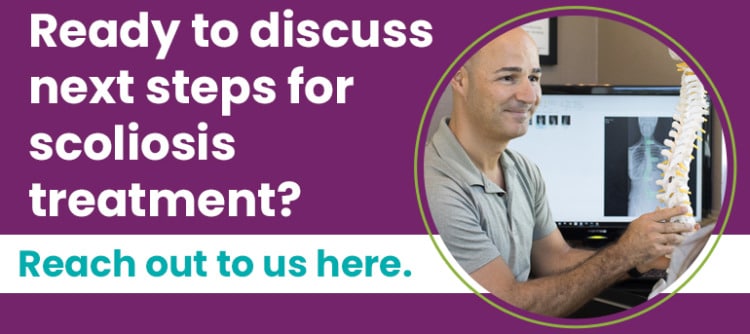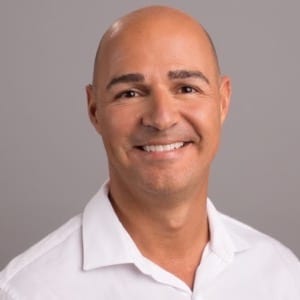Scoliosis Effects: How Spinal Curvature Impacts Health
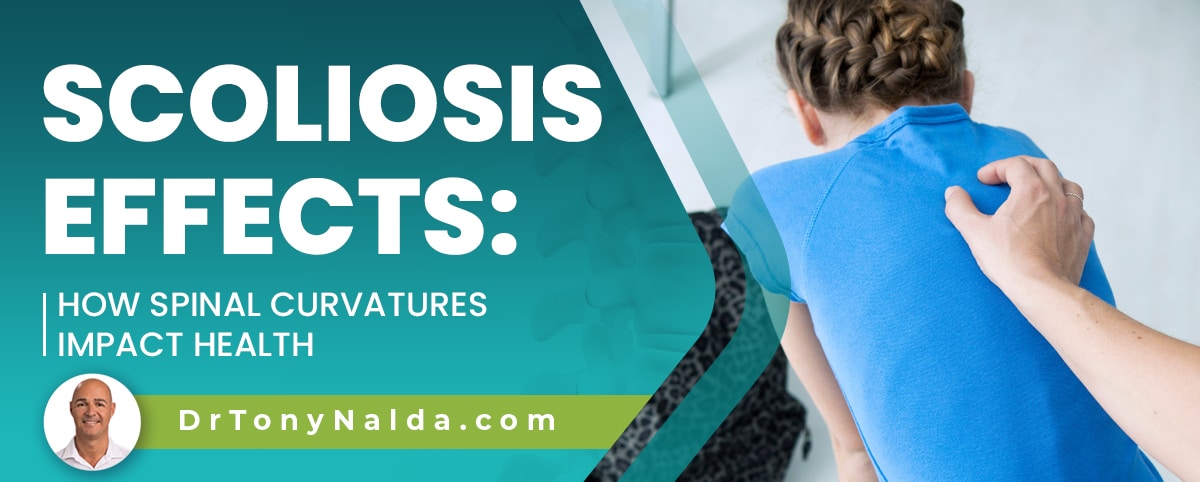
The more severe scoliosis is, the more noticeable its effects are going to be; the best way to minimize the potential effects of scoliosis is to treat the condition proactively. The spine's healthy curves are needed to keep it strong, flexible, and able to handle mechanical stress.
The spine is a key structure in human anatomy, and when an unnatural spinal curve develops, a person's health can be impacted in a number of ways. The effects of scoliosis vary from patient to patient but commonly include changes to posture and movement. Adult scoliosis can also be painful.
To better understand the effects of scoliosis, let's start with why the spine's healthy curves are so important.
Table of Contents
A Healthy Spine
A healthy spine is going to have its natural curves in place and its vertebrae aligned in a straight and neutral position.
The spine gives the body structure, allowing us to stand upright and practice good posture, engage in a wide range of movements, protects important organs, and works with the brain to form the central nervous system; an unhealthy spine can disrupt any of those functions.
Adjacent vertebrae are separated by an intervertebral disc that gives the spine structure (vertebral bodies attach to the disc in between), flexibility, and act as the spine's shock absorbers.
A healthy spine is curved at each of its main sections: the cervical spine, thoracic spine, and the lumbar spine.
Each spinal section has its own unique roles to play in overall spinal health and function, and the health of a section's curve is important.
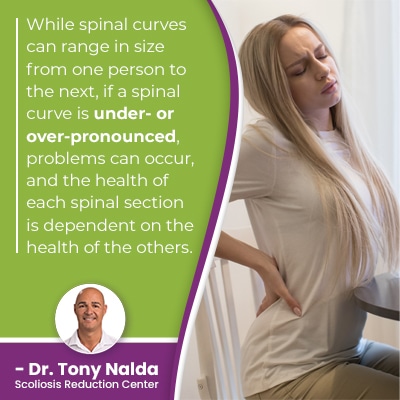 While spinal curves can range in size from one person to the next, if a spinal curve is under- or over-pronounced, problems can occur, and the health of each spinal section is dependent on the health of the others.
While spinal curves can range in size from one person to the next, if a spinal curve is under- or over-pronounced, problems can occur, and the health of each spinal section is dependent on the health of the others.
Spinal conditions, like scoliosis, that cause a loss of the spine's healthy curves can affect a person's health in a number of ways.
Diagnosing Scoliosis
Scoliosis is diagnosed through a combined physical examination that includes an adam's forward bend test and X-ray results.
An X-ray is needed to confirm the rotational component and determine the patient's Cobb angle measurement; this is what condition severity is based on and a key factor treatment plans are shaped around.
Once a diagnosis is given, the most important decision patients have to make is the type of treatment options to commit to, and while some school screening programs conducted by the school nurse are still in place, early detection mainly depends on parents and/or caregivers recognizing the condition's early signs.
What is Scoliosis?
Scoliosis causes a loss of healthy spinal curves by causing an unhealthy sideways-bending and rotating spinal curve to develop; this can occur anywhere in the spine, or in more than one section, but the most common section affected is the largest spinal section: the thoracic spine.
As mentioned, each spinal section has unique responsibilities, so if a section develops an unhealthy curve, its ability to function optimally can be disrupted.
The cervical spine, for example, has to support the weight of the head, connects the brain to the rest of the body, and facilitates the head's movement.
The thoracic spine is the only section attached to the rib cage so helps protect important organs and facilitates the middle/upper back's range of motion.
The lumbar spine has to support the weight of the spinal sections above, the entire trunk, and its vertebrae feel the effects of bending, lifting, and twisting movements.
So where scoliosis develops in the spine will shape its effects; in most cases of spinal conditions, the area of the body located the closest to an affected spinal section is going to feel the majority of its direct effects.
How Does Scoliosis Affect the Body?
Scoliosis can affect a person's body and health in a number of ways, and the more severe scoliosis is, the more it can disrupt health and wellness.
First of all, as a progressive condition, the nature of scoliosis is to get worse over time, and this means the size of the unnatural spinal curvature will increase, as will the condition's uneven forces, and their effects.
When it comes to symptoms of scoliosis, children and adults differ in the main effect: postural changes versus pain.
Posture and Childhood Scoliosis
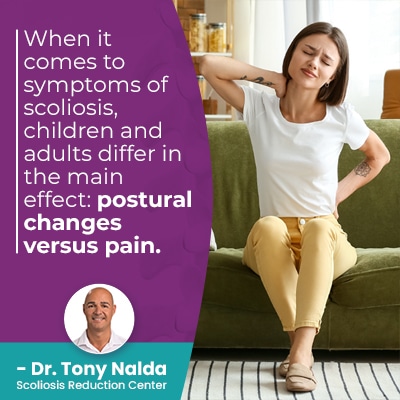 The main effect of childhood scoliosis involves posture and progression.
The main effect of childhood scoliosis involves posture and progression.
We don't know what causes scoliosis to develop initially in most cases, but we do know what makes it progress: growth.
So as children grow, they are at risk for progression, and the faster they grow, the more potential there is for rapid progression.
As rapid growth can equal rapid progression, adolescent idiopathic scoliosis patients are the most at risk because of puberty.
As the condition develops and progresses in children, uneven shoulders and hips are often the earliest telltale signs of scoliosis; additional changes can include uneven shoulder blades, the development of a rib cage arch, and arms and legs hanging differently; basically, the unnatural spinal curvature's uneven forces disrupt the body's overall symmetry.
It's postural changes that lead to the majority of my childhood scoliosis diagnoses, and in adults, it's pain.
Pain and Adult Scoliosis
Scoliosis becomes a compressive condition once skeletal maturity is reached, and this means the spine and its surroundings are vulnerable to the compressive force of the unnatural spinal curve.
Compression is uneven pressure, and it doesn't just affect the spine, but also the spine's surrounding muscles, nerves, and the entire body.
In children whose spines are still growing, the constant lengthening motion of growth counteracts the compressive force, and once growth stops, this is when many adults learn they've actually had scoliosis during adolescence, but were unaware; this is a common scenario.
For these adult patients, hip pain, muscle imbalances, and nervous system disruptions due to compression are common, and the best way to relieve pain caused by scoliosis is to address it with treatment.
Scoliosis pain can involve the muscles, mild back pain to chronic back pain, and pain that radiates into the extremities due to nerve damage and compression.
Severe scoliosis cases also are capable of causing complications like difficulty breathing, particularly if left untreated.
What are the Effects of Untreated Scoliosis?
Scoliosis doesn't have to completely re-shape a person's quality of life; some changes have to be made, but many people go on to thrive, despite having scoliosis; there are a number of famous celebrities and world-class athletes with scoliosis that can attest to that.
Although progressive, scoliosis can be highly treatable, but what happens if scoliosis is left untreated?
If scoliosis is left untreated, it's being left to progress unimpeded, and this can lead to severe and very severe scoliosis, and a number of potential complications.
If scoliosis is left untreated and becomes severe and/or in atypical cases, complications can include trouble breathing, disruptions to lung function, the digestive system, headaches/migraines, and we also can't discount the potential effects on a person's mental health.
In severe cases, there can be a prominent lean to one side, clothing is ill-fitting, and the asymmetrical posture is overt; particularly for adolescents, this can lead to negative self image and body image issues.
Changes to gait, balance, and coordination are also common, particularly when severe, and as most children want to fit in with their peers at any age, these types of changes can be difficult to process and live with.
Conclusion
The extent to which scoliosis impacts a person's health will depend largely on the chosen treatment response.
Patients can choose between a traditional surgical treatment plan or conservative scoliosis treatment.
Traditional treatment funnels patients, and particularly severe cases, towards scoliosis surgery, and spinal fusion surgery comes with some serious potential risks, side effects, and complications.
A conservative treatment plan is integrative so will combine the power of chiropractic care, physical therapy, corrective bracing, and rehabilitation.
When the spine curves abnormally and rotates, scoliosis symptoms will vary, and risk factors for scoliosis include age, gender, and a family history.
The most common form of scoliosis is idiopathic scoliosis, and neuromuscular scoliosis, degenerative scoliosis, and congenital scoliosis are considered atypical and can involve particularly severe scoliosis cases.
Scoliosis affects the entire body when it's severe, and scoliosis treatment has to address all of the condition's effects for the best potential results and quality of life.
Here at the Scoliosis Reduction Center®, preventing curve progression is the goal; scoliosis can be highly treatable, and the Center's results speak for themselves.
A progressive abnormal curvature of the spine is going to affect a person's health the more severe it becomes, so the sooner treatment is started, the better.
Dr. Tony Nalda
DOCTOR OF CHIROPRACTIC
After receiving an undergraduate degree in psychology and his Doctorate of Chiropractic from Life University, Dr. Nalda settled in Celebration, Florida and proceeded to build one of Central Florida’s most successful chiropractic clinics.
His experience with patients suffering from scoliosis, and the confusion and frustration they faced, led him to seek a specialty in scoliosis care. In 2006 he completed his Intensive Care Certification from CLEAR Institute, a leading scoliosis educational and certification center.
About Dr. Tony Nalda
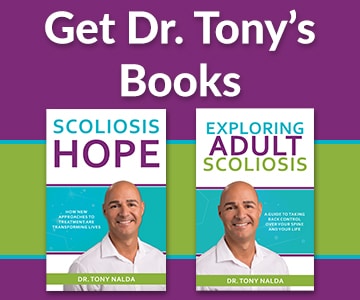 Ready to explore scoliosis treatment? Contact Us Now
Ready to explore scoliosis treatment? Contact Us Now